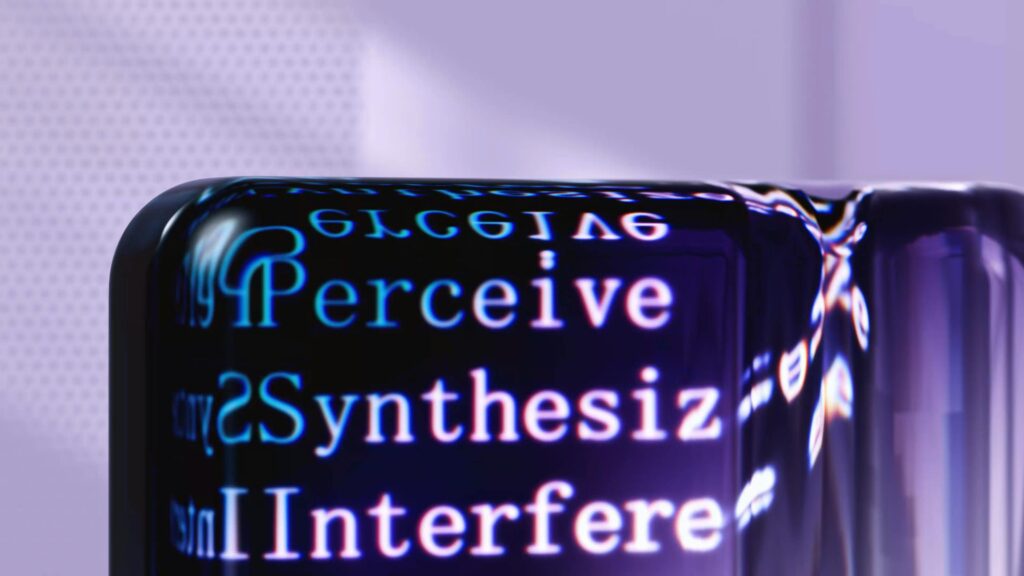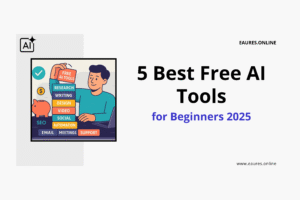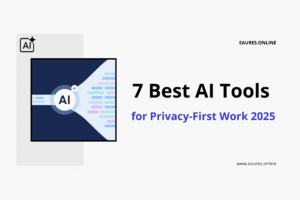Claude vs ChatGPT vs Gemini vs Llama: The Ultimate 2025 Face‑Off
Table of Contents
Generative AI didn’t just evolve in 2025—it changed shape. “Reasoning” modes, massive context windows, and agentic tool use turned chatbots into problem‑solving collaborators. In this definitive comparison of Claude vs ChatGPT vs Gemini vs Llama, we unpack what’s new, where each model shines, and how to pick the right system for your team or workflow. We focus on real‑world fit: speed, reasoning, long‑context work, multimodality, deployment options, compliance, and total cost of ownership.
Behind the scenes, each ecosystem took a distinctive path. Anthropic introduced a hybrid reasoning approach with Claude 3.7 Sonnet and expanded context with Sonnet 4 (beta). OpenAI pushed its o‑series (o3, o4‑mini) into everyday reasoning and kept GPT‑4o as a multimodal staple while adding newer GPT‑5 family options. Google graduated Gemini into 2.0 and 2.5 “thinking” models with 1M‑token context and deep multimodality. Meta doubled down on open‑weight access with Llama 3.1 (8B/70B/405B), enabling on‑prem and edge deployments at scale. AnthropicAnthropicOpenAI+1Google AI for Developersblog.googleHugging Face

Claude vs ChatGPT vs Gemini vs Llama: Key takeaways for 2025
- Fast pick by need
- Best overall reasoning for coding & complex tasks (managed cloud): Claude 3.7 Sonnet, with an extended‑thinking mode you can dial up or down, plus a 1M‑token option in Sonnet 4 (beta) for extreme contexts. AnthropicAnthropic
- Best integrated multimodality & real‑time UX: ChatGPT (GPT‑4o) and the o‑series, with broad tool support, real‑time vision/audio, and enterprise features; newer GPT‑5 family options exist for API users. OpenAIOpenAI Platform+1
- Best long‑context throughput with deep “thinking” options: Gemini 2.0/2.5, offering 1M‑token context, adaptive “thinking budgets,” and robust image/video/audio understanding. Google CloudGoogle AI for Developers
- Best for open‑weight, hybrid or on‑prem deployments: Llama 3.1 (8B/70B/405B)—run locally, customize, or scale via cloud providers while retaining control. Hugging Face
- Context windows in practice
Claude and Gemini now reach 1M tokens in select model tiers/modes; OpenAI’s o‑series commonly offers ~200K, while GPT‑4o sits at ~128K; Llama 3.1 advertises ~128K on supported stacks. (See sources below.) AnthropicGoogle CloudOpenAI Help CenterOpenAI PlatformHugging Face - Agentic patterns are the new normal
All four ecosystems support multi‑step tool use, code execution, and planning. Claude and Gemini expose configurable “thinking” or “extended thinking”; OpenAI’s o‑series preserves reasoning tokens across tool calls; Llama 3.1 instruct models ship with tool‑calling fine‑tunes. AnthropicAnthropicOpenAIHugging Face
Sources for this section: Anthropic docs & announcement; OpenAI model pages and cookbook; Google Gemini docs; Meta Llama model cards. AnthropicAnthropicOpenAI+1Google AI for DevelopersGoogle CloudHugging Face
How we compared Claude vs ChatGPT vs Gemini vs Llama
We prioritized: (1) reasoning quality on open‑ended tasks, (2) long‑context reliability, (3) multimodal breadth and latency, (4) enterprise controls (privacy, deployment, compliance), (5) ecosystem/tooling, and (6) total cost over time. We drew on vendor documentation, public model cards, and community/benchmark infrastructure such as LMSYS’ Chatbot Arena (crowd‑rated comparisons), while avoiding over‑fitting to any single synthetic test. LMSYS
Model‑by‑model deep dive: Claude vs ChatGPT vs Gemini vs Llama
Claude (Anthropic)
What’s new in 2025
- Claude 3.7 Sonnet: Anthropic’s “hybrid reasoning” model can respond instantly or “think longer” with a controllable budget. Extended thinking improves math, coding, and scientific tasks. Available across Claude plans, with transparent pricing. Anthropic
- Sonnet 4 (beta) 1M context: For ultra‑long docs and codebases, Sonnet 4 supports a 1,000,000‑token window in beta (enterprise tiers), alongside 200K standard contexts. Anthropic
Strengths
- Controllable depth: You can trade speed for quality by setting thinking budgets. Anthropic
- Coding & agents: Strong results on agentic coding workflows; Claude Code preview integrates file edits, tests, shell tools, and GitHub. Anthropic
- Platform choice: Access via Anthropic API, Amazon Bedrock, and Google Vertex AI—useful for procurement and data‑residency needs. Anthropic
Watch‑outs
- Feature gating: Extended‑thinking mode and 1M contexts have plan/tier and beta constraints. Anthropic
- Ecosystem breadth: Rapidly improving, but tool/plugin catalogs remain less crowded than OpenAI’s.
ChatGPT (OpenAI)
What’s new in 2025
- o‑series (o3, o4‑mini): Optimized for reasoning and tool use; in ChatGPT and API with larger context windows (commonly up to ~200K for o3/o4‑mini per OpenAI Help Center). OpenAIOpenAI Help Center
- GPT‑4o: Real‑time multimodality (voice/vision), mainstream availability across ChatGPT and Azure; cornerstone of OpenAI’s consumer UX. OpenAIMicrosoft Azure
- GPT‑5 family: Newer models and migration guides exist in the API for developers exploring the latest stack. OpenAI Platform
Strengths
- Best all‑around multimodality for daily use—vision, audio, and tool integrations (code interpreter, browsing, file analysis) are polished and widely adopted. OpenAI
- Mature ecosystem: Largest catalog of apps, extensions, SDKs, and enterprise‑grade controls; strong documentation and examples for reasoning plus tool calling. OpenAI Cookbook
Watch‑outs
- Context variability by model: GPT‑4o ≈ 128K context; o‑series higher; verify per model and plan. OpenAI PlatformOpenAI Help Center
- Vendor lock‑in: Deepest capabilities are inside OpenAI‑first surfaces; portability requires architectural planning.
Gemini (Google)
What’s new in 2025
- Gemini 2.0 → 2.5: Google advanced from Gemini 1.5 to 2.0 Flash and then 2.5 Pro/Flash, with 1M‑token contexts and “thinking” modes (Deep Think) for harder tasks. Google Cloudblog.google
- Model lineup: 2.5 Pro (enhanced reasoning & coding), 2.5 Flash (cost‑efficient), Flash‑Lite (throughput), plus live audio/video interaction variants in preview/GA phases. Google AI for Developers
Strengths
- Long‑context leader: Native 1M‑token windows are now common across production‑ready variants, great for PDFs, codebases, meetings, and video. Google Cloud
- Enterprise integration: Tight tie‑ins with Vertex AI and Google cloud security, plus Workspace add‑ons and data governance. Google Cloud
Watch‑outs
- Model churn: Faster version cadence (2.0 → 2.5) means occasional deprecations; plan migrations. Google AI for Developers
Llama (Meta)
What’s new in 2025
- Llama 3.1 (8B/70B/405B): Open‑weight models you can run in your cloud or on‑prem; 405B competes with top proprietary systems on many tasks. Community license governs use. Hugging Face
Strengths
- Deployment control: Open‑weight access allows fine‑tuning, air‑gapped environments, and cost control on your infrastructure or via partners (Azure, etc.). TECHCOMMUNITY.MICROSOFT.COM
- Longer contexts: ~128K context windows are supported in the family, enabling serious RAG and large‑document work when your stack supports it. Hugging Face
Watch‑outs
- You own the MLOps: Running Llama well requires serving, safety layers, evals, and monitoring decisions your team must maintain.
- License ≠ OSI: “Open‑weight” differs from fully open‑source; review the Llama 3.1 Community License terms. GitHub

Feature comparison: Claude vs ChatGPT vs Gemini vs Llama
Context window & long‑documents
- Claude: 200K standard; Sonnet 4 adds 1M (beta; higher tiers). Great for legal, technical, and codebases. Anthropic
- ChatGPT (OpenAI): o‑series (o3/o4‑mini) commonly ~200K; GPT‑4o around 128K. OpenAI Help CenterOpenAI Platform
- Gemini: 2.0/2.5 lines offer 1M tokens in production‑ready variants. Google Cloud
- Llama: Llama 3.1 family advertises ~128K, subject to serving stack limits. Hugging Face
Reasoning & agentic workflows
- Claude: “Extended thinking” and budgeting; strong at agentic coding (Claude Code). Anthropic
- ChatGPT: o‑series preserves reasoning tokens across tool calls in the Responses API; excellent function calling. OpenAI
- Gemini: “Thinking” with Deep Think (2.5 Pro) for advanced math/coding; thought summaries and budgets in the API. Google AI for Developers
- Llama: 3.1 instruct models fine‑tuned for tool calling, ideal for building your own agents. Hugging Face
Multimodality
- ChatGPT (GPT‑4o): Real‑time voice, vision, and text; polished end‑user experience. OpenAI
- Gemini 2.0/2.5: Native video, image, audio, and text understanding across tiers. Google AI for Developers
- Claude: Strong vision/PDF/code understanding; emphasis on reliability and safety. Anthropic
- Llama: Primarily text‑in/text‑out (3.1) with broad ecosystem support; vision‑enabled variants exist in the wider Llama line but may require different weights/stacks (outside 3.1 core). Hugging Face
Deployment & governance
- Claude: Anthropic API, Bedrock, Vertex AI; enterprise plans, evaluations, and safety documentation. Anthropic
- ChatGPT: OpenAI API, ChatGPT Enterprise/Edu, Azure OpenAI; robust admin and compliance tooling. Microsoft Azure
- Gemini: Google AI Studio and Vertex AI; strong data governance within Google Cloud. Google AI for Developers
- Llama: Open‑weight; run in your VPC/on‑prem, or via Azure and partner platforms; licensing governs redistribution/uses. TECHCOMMUNITY.MICROSOFT.COMGitHub
Benchmarks vs real‑world performance
Public leaderboards are useful but imperfect. Chatbot Arena (LMSYS) uses blind, head‑to‑head comparisons and Elo‑style rankings based on human votes—a valuable signal across releases. Still, your workload (codebase size, data privacy, latency budgets, GPU access) will matter more than a single score. Treat Arena and similar sources as directional, then test on your data. LMSYS
Pricing & value (the practical view)
Exact prices shift by model, provider, and region. Instead of memorizing per‑million rates, evaluate effective cost‑per‑task:
- Token efficiency: Long‑context models prevent chunking overhead in RAG pipelines.
- Thinking budgets: Tuning reasoning depth (Claude/Gemini/o‑series) trades a small token premium for fewer retries and better first‑pass accuracy. AnthropicGoogle AI for DevelopersOpenAI
- Infra control (Llama): Owning the stack can cut vendor costs long‑term, but adds MLOps responsibilities. Hugging Face

Use‑case playbook: choosing among Claude vs ChatGPT vs Gemini vs Llama
1) Writing, strategy, research
- Pick Claude when you want thoughtful, structured outputs with tunable depth, especially for complex briefs or compliance‑sensitive drafts. Anthropic
- Pick ChatGPT for fast multimodal ideation and widely supported plugins/tools. OpenAI
- Pick Gemini for large document sets, long meeting transcripts, and mixed media inputs (video + slides). Google Cloud
- Pick Llama if you must retain full control of data/workflows on private infrastructure. Hugging Face
2) Engineering & data work
- Claude: Agentic coding and reasoning with controllable “extended thinking.” Anthropic
- ChatGPT (o‑series): Function calling and preserved reasoning tokens excel at multi‑tool pipelines. OpenAI
- Gemini 2.5 Pro: “Deep Think” helps on hard math/coding; 1M context simplifies monorepos and long tech docs. blog.google
- Llama 3.1: Fine‑tune for domain‑specific code style; deploy on GPUs you control. Hugging Face
3) Enterprise & regulated industries
- Claude via Bedrock/Vertex AI to fit existing controls; clear safety documentation. Anthropic
- ChatGPT Enterprise/Azure OpenAI for mature governance and SLAs at scale. Microsoft Azure
- Gemini on Vertex AI aligns with Google Cloud’s security posture and tooling. Google AI for Developers
- Llama suits air‑gapped or data‑sovereign deployments when you need full stack custody. TECHCOMMUNITY.MICROSOFT.COM
Pros & cons snapshot
Claude
Pros: Hybrid reasoning, controllable thinking, strong coding agents, multi‑cloud availability, high reliability on long‑form tasks.
Cons: Some features (1M context) are beta/tiered; smaller plugin ecosystem vs OpenAI. Anthropic
ChatGPT
Pros: Best all‑around UX, real‑time multimodality, massive ecosystem, powerful o‑series for reasoning with large contexts.
Cons: Model/context specifics vary; deepest features live inside OpenAI‑first surfaces. OpenAI Help CenterOpenAI
Gemini
Pros: 1M‑token long context across production variants; rich multimodality; strong Google Cloud/Workspace fit.
Cons: Rapid releases require occasional migrations; feature names change quickly. Google CloudGoogle AI for Developers
Llama
Pros: Open‑weight control, on‑prem options, competitive 405B model, fine‑tuning freedom.
Cons: More MLOps burden; license differs from OSI open‑source. Hugging FaceGitHub
FAQs: Claude vs ChatGPT vs Gemini vs Llama
Is Claude better than ChatGPT for coding?
Often for agentic coding—yes. Claude 3.7 Sonnet plus Claude Code performs strongly on multi‑file edits, tests, and tool use. ChatGPT’s o‑series is also excellent, especially for function calling and multi‑tool chains. Your repo size and toolchain decide the winner. AnthropicOpenAI
Which model handles the longest documents?
Gemini 2.0/2.5 ships 1M‑token contexts broadly; Claude Sonnet 4 offers 1M in beta; o‑series commonly reach ~200K; GPT‑4o ~128K; Llama 3.1 ~128K depending on serving. Google CloudAnthropicOpenAI Help CenterOpenAI PlatformHugging Face
What if I need full data control?
Choose Llama 3.1 to run open‑weights on your hardware or cloud tenancy, or use Claude/Gemini via providers that meet your governance needs (Bedrock, Vertex AI). Hugging FaceAnthropic
Are public benchmarks reliable?
They’re helpful but not sufficient. Use Chatbot Arena and vendor evals as direction, then run task‑specific evaluations on your data. LMSYS

Final recommendation: How to decide—fast
- Scope your ceiling: If you expect million‑token briefs or multi‑hour transcripts, start with Gemini 2.5 or Claude Sonnet 4 (beta). Google CloudAnthropic
- Target your core mode: If your users live in voice/vision and want a polished interface, ChatGPT (GPT‑4o + o‑series) is the smoothest path. OpenAI
- Decide your custody model: If data gravity dictates on‑prem/VPC, build on Llama 3.1 and layer your tool‑calling, safety, and evals. Hugging Face
- Pilot two, standardize one: Run a bake‑off on your own tasks (coding tickets, RAG docs, support macros). Pick the model that solves your problems with the fewest retries and guardrail exceptions.





I Love